Studies on Jeremiah (8 vols.)
Digital Logos Edition
Overview
Studies on Jeremiah deciphers the metaphors used as well as the historical, political and social contexts that are an integral part of understanding how Jeremiah relates to our lives today. Troubling Jeremiah contains 24 essays by Jeremiah scholars to examine the metaphors that are a part of the book of Jeremiah. Kelvin G. Friebel researches the prophetic aspects of Jeremiah and Ezekiel as they have the most accounts of prophetic signs of all the books of the Bible. Friebel’s findings are important because they help us to understand the use of prophetic signs and how they are relative to today.
With the Logos Bible Software edition, all Scripture references are linked to the original language texts and the English Bibles in your library. By employing the advanced search features in Logos, you can find the exact topics, Scripture references, and subjects you’re looking for. With Logos, every word is essentially a link. All references to the text of Jeremiah are automatically linked to the Hebrew texts and English Bible translations. Clicking on any word in any language automatically opens your preferred lexicons and searches for the corresponding entry which makes the Logos edition the most accurate and efficient way to study the book of Jeremiah.
Studies on Jeremiah is a beneficial addition to anyone’s library who wants to understand the book of Jeremiah more and how it relates to us today.

- Contains an index of references
- Each book includes a list of authors cited
- Title: Studies on Jeremiah
- Volumes: 8
- Pages: 2,204
This title is included in the following collections
You can save when you purchase this product as part of a collection.
Logos 8 Messianic Jewish Diamo...
$2,999.99$2,999.99Logos 9 Messianic Jewish Diamo...
$2,999.99$2,999.992025 Messianic Jewish Portfoli...
$4,749.99$3,562.49Verbum 8 Portfolio Legacy Libr...
$4,749.99$4,749.99
- $4,999.99
- $7,749.99
- $11,399.99
- $23,999.99$17,999.99
- $21,749.99
- $24,999.99
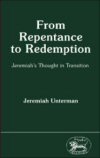
In the Introduction of From Repentance to Redemption, Unterman says that the repentance is not the repentance we commonly think of that has to do with regret, but that has to do with a spiritual return. He wants to make that point clear as he covers the topics of repentance and redemption in his book so that we can have a clear picture of how God views them.
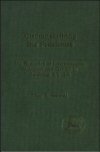
In Jeremiah 3:1–4:4, the prophet employs the image of Israel as God’s unfaithful wife, who acts like a prostitute. The entire passage is a rich and complex rhetorical tapestry designed to convince the people of Israel of the error of their political and religious ways, and their need to change before it is too late. As well as metaphor and gender, another important thread in the tapestry is intertextuality, according to which the historical, political and social contexts of both author and reader enter into dialogue and thus produce different interpretations. But, as Shields shows in her final chapter, it is in the end the rhetoric of gender that actually constructs the text, providing the frame, the warp and woof, of the entire tapestry, and thus the prophet’s primary means of persuasion.

Greek Text of Jeremiah was originally a doctoral thesis and the information was revised to be made into a book. Soderlund includes a history of the Greek Text of Jeremiah as well as an in-depth analysis of the methodology in Jeremiah. Also included is a list of notes from each chapter.
Sven Soderlund is Associate Professor in Biblical Studies. He is author of Greek Text of Jeremiah as well as editor of Romans and the People of God and The Way of Wisdom
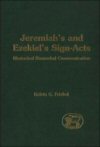
The books of Jeremiah and Ezekiel contain the majority of the Biblical accounts of prophetic sign-actions. By analyzing these two prophets' actions according to the terms and concepts used in studies of nonverbal communication and rhetoric, this work seeks to bring conceptual and terminological clarity to the discussion of prophetic sign-acts and to enhance the perception of the prophets as persuasive communicators. Rather than prophetic sign-acts being viewed as having a magical derivation or as being inherently efficacious in bringing about what they portray, the sign-acts are viewed as being primarily forms of nonverbal communication whose purpose was to have a persuasive impact upon spectators.
Kelvin G. Friebel is Associate Professor of Old Testament Studies at Alliance Theological Seminary, Nyack, New York.
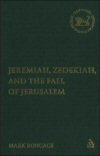
Mark Roncace demonstrates that the story of Jeremiah and Zedekiah is not the typical good prophet/bad king story found in much of prophetic literature and the Deuteronomic History. He provides an intertextual reading of the passages which connect Jeremiah to other figures in the Old Testament. The text features the dynamic interaction between the prophet Jeremiah and King Zedekiah in the context of events surrounding the fall of Jerusalem. While there have been many literary studies of Biblical texts, there has been little work on the narratives in the book of Jeremiah. Roncace’s book begins to uncover the richness of the prophetic narratives in Jeremiah and focuses on issues of characterization and point of view as well as the text’s connections with other passages in the book of Jeremiah and those beyond it.
Mark Roncace is Assistant Professor of Religion at Wingate University in Wingate, North Carolina, USA. He has published articles on a variety of subjects, and is the co-editor of Teaching the Bible: Practical Strategies for Classroom Instruction.
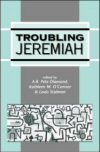
Troubling Jeremiah presents 24 different essays by Jeremiah scholars who are troubled by the Biblical book and give the scholarship on Jeremiah trouble in turn. Essays seek to move beyond the Duhm-Mowinckel source criticism of the book to address matters of metaphor, final form, intertextuality, and the relationship of the book to various audiences of readers. Taken together, the essays in this volume press for an end to “innocent” readings of Jeremiah inasmuch as current models prove inadequate for troubling the very Jeremiah they have already helped to reveal.
A. R. Pete Diamond, Assistant Professor Santa Barbara City College, is the author of numerous contributions to the field including, “Interlocutions: The Poetics of Voice in the Figuration of YHWH and his Oracular Agent, Jeremiah,” in Interpretation 62/1 (2008). A.R. Pete Diamond is Adult Education Coordinator, All Saints Episcopal Church, Santa Barbara, California.
Kathleen M. O'Connor is Adult Education Coordinator, All Saints Episcopal Church, Santa Barbara, California. Kathleen O'Connor is Professor of Old Testament at Columbia Theological Seminary, Decatur, Georgia.
Louis Stulman is Professor of Religious Studies, University of Findlay. His numerous publications on Jeremiah include the Abingdon Old Testament Commentary on Jeremiah (2005), Order Amid Chaos: Jeremiah as Symbolic Tapestry (Sheffield, 1998).
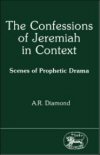
Nothing distinguishes the book of Jeremiah from earlier works of prophecy quite as much as the attention it devotes to the prophet, and few things receive more scholarly comment. With the amount of information we have through the first and third person, we know more about Jeremiah's life and personality than we do of any other prophet. Polk deciphers the autobiographical passages to explore the meaning of the book being written in this way.
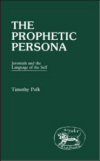
In the study of the book of Jeremiah, the so-called confessions of the prophet have attracted a lot of attention and have been given a central role in the understanding of the prophet's message and significance. The attempt to clarify their central role has been plagued by two connected tasks or problems: the problem of explaining their relationship to the Psalms and at the same time, properly discerning their relationship to the prophetic mission.
A. R. Pete Diamond, Assistant Professor Santa Barbara City College, is the author of numerous contributions to the field including, “Interlocutions: The Poetics of Voice in the Figuration of YHWH and his Oracular Agent, Jeremiah,” in Interpretation 62/1 (2008). A.R. Pete Diamond is Adult Education Coordinator, All Saints Episcopal Church, Santa Barbara, California.